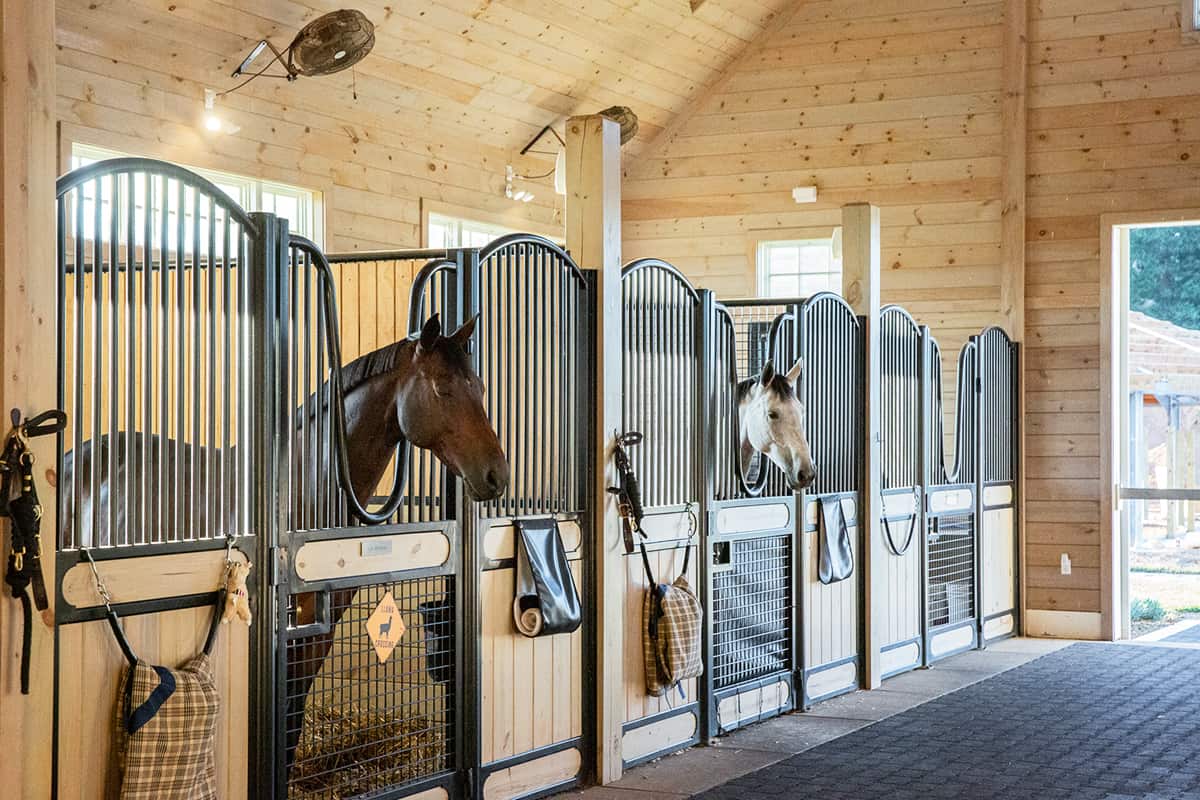
Horse stalls are essential structures in equestrian facilities, providing a safe and comfortable living space for horses. These individual enclosures play a crucial role in the overall well-being and management of horses. In this article, we will explore the importance of horse stalls and discuss the key elements that contribute to creating a comfortable home for our equine companions.
Space and Size: When designing horse stalls, providing adequate space is crucial. Horses need enough room to move, stretch, lie down, and exhibit natural behaviors. A well-designed stall should be spacious enough to allow a horse to turn around comfortably without feeling cramped. The size of the stall should consider the horse’s breed, size, and activity level. Generally, a stall measuring 12′ x 12′ or larger is recommended for an average-sized horse.
Ventilation and Air Quality: Proper ventilation is vital to maintaining a healthy environment within a horse stall. Good air circulation helps prevent the buildup of harmful gases, dust, and odors, reducing the risk of respiratory issues. Horse stalls should have windows, vents, or openings that allow fresh air to enter and stale air to exit. Additionally, incorporating mesh or bars into the stall design can help promote airflow while ensuring the horse’s safety.
Flooring and Bedding: The flooring of a horse stall should provide a comfortable and supportive surface for the horse to stand and lie down on. Popular options include rubber mats or specialized stall flooring systems that offer cushioning and insulation. Proper bedding, such as straw, wood shavings, or pelleted bedding, should be provided to absorb moisture, provide insulation, and offer a soft surface for the horse to rest on. Regular cleaning and maintenance of the bedding are essential to ensure a clean and healthy living space.
Safety and Security: Safety is of utmost importance when it comes to horse stalls. Stalls should be constructed using sturdy materials such as wood or metal to withstand the horse’s weight and prevent accidental breakage. Smooth surfaces without sharp edges or protrusions are necessary to minimize the risk of injury. Additionally, properly installed stall gates and latches are crucial to keep the horse securely confined while allowing for easy access for handlers.
Socialization and Visual Stimulation: While horses spend a significant amount of time in their stalls, it is important to provide opportunities for social interaction and visual stimulation. Stalls with bars or mesh allow horses to see and interact with their neighbors, promoting socialization and reducing feelings of isolation. Access to a window or outdoor view can also provide visual stimulation and a connection to the outside world.
Conclusion
Horse stalls are more than just enclosures; they are the equine equivalent of a home. Creating a comfortable and functional living space for horses is essential to their overall well-being. By considering factors such as space, ventilation, flooring, safety, and socialization, horse owners can ensure that their horses have a comfortable and secure environment that promotes good health and contentment. A well-designed and well-maintained horse stall is a testament to the care and commitment we have for our equine companions.



